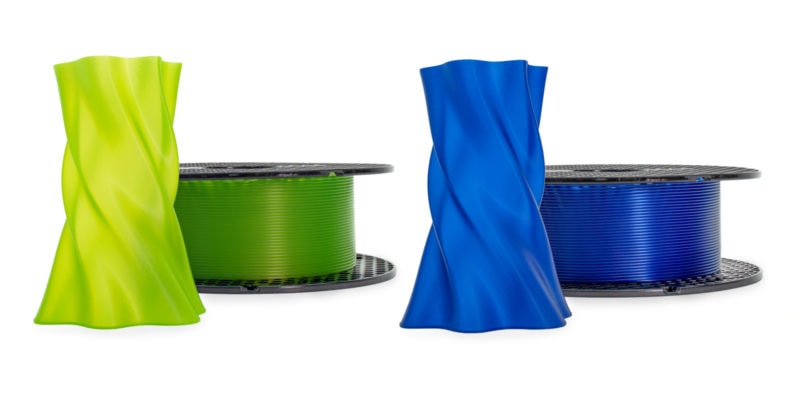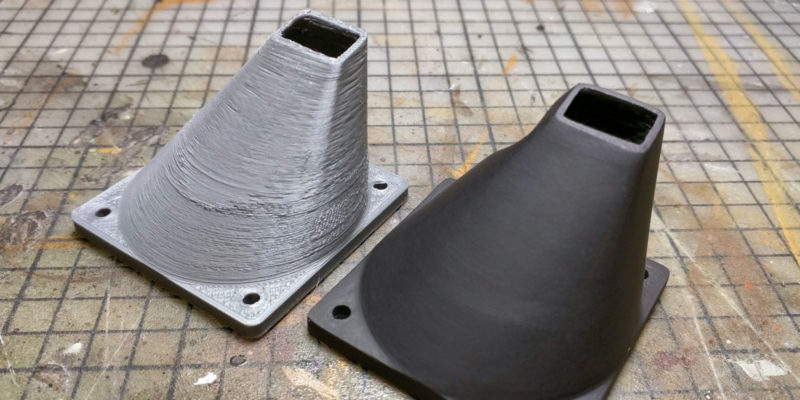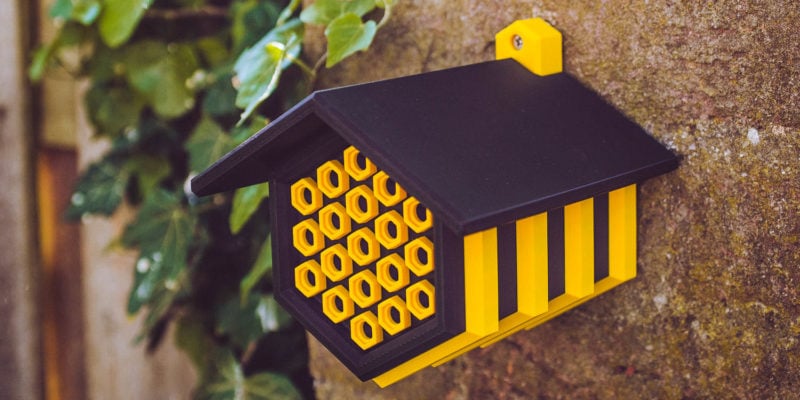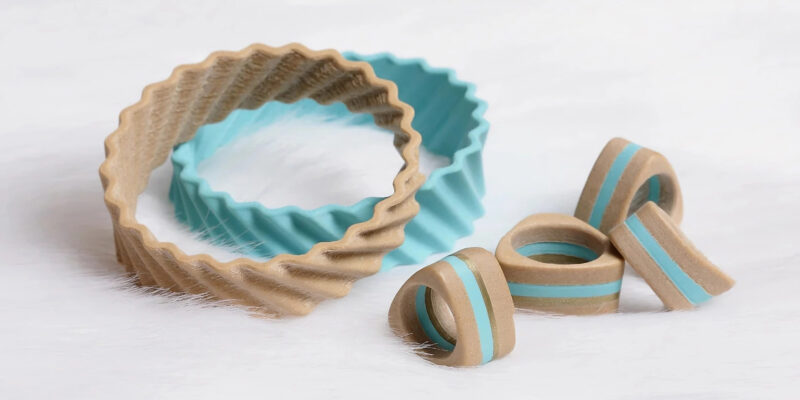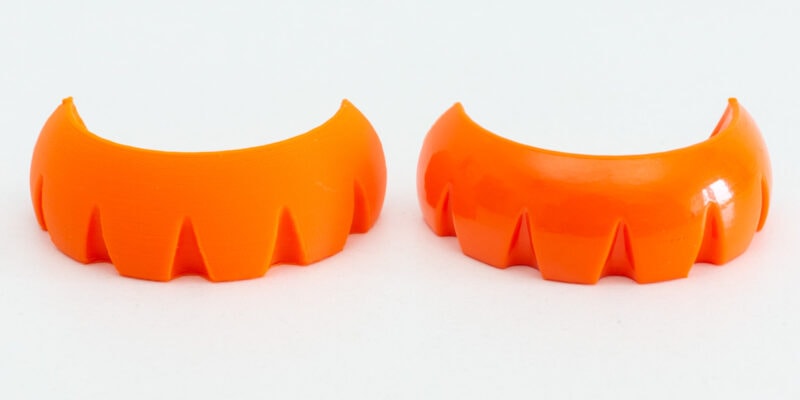It’s the question heard ‘round the world in the 3D printing community: Is PLA biodegradable or not? PLA filament makers still say yes, even as their customers swear their prints won’t degrade.
So, what’s the truth about PLA plastics? And how can shoppers worried about plastic waste and sustainability reduce their environmental impact in an industry dominated by plastic consumption?
Let’s find out!
What Is PLA Plastic (Polylactic Acid) Made of?
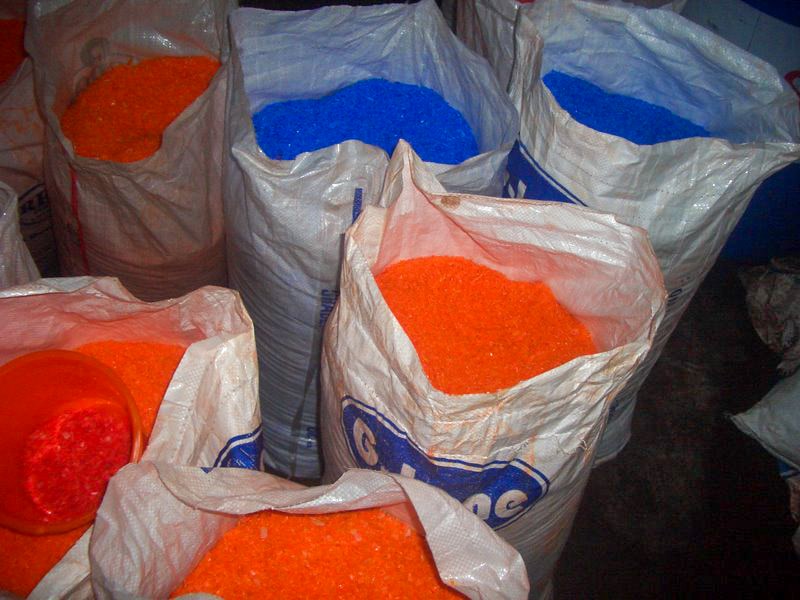
Polylactic acid (PLA) is a thermoplastic made by fermenting carbohydrate-rich plant matter. It is one of the most widely used bioplastics and is a staple in the food, packaging, and medical industries. There are countless biomaterials PLA can be made from, but it is typically produced from hardy crops like corn, sugarcane, beetroot, and more.
PLA is a popular material for 3D printing filament because it’s easy to print with. It has a low melting temperature, so users don’t need premium features on their printer to use it. It also has a low shrinkage rate, so beginners find it more forgiving than ABS or PETG in terms of bed adhesion.
While most PLA filament is made from corn starch and other traditional materials, the niche aspect of 3D printing allows manufacturers more creativity than large industrial operations.
Some small makers have used this flexibility to address several problems at once by making their PLA products from post-consumer waste, such as spent coffee grounds from cafes or used hops from local breweries. It’s important to know that this doesn’t necessarily make PLA food safe.
Is PLA Biodegradable or Compostable?

Polylactic acid is both biodegradable and compostable. Biodegradability refers to any product that can be decomposed by bacteria or living organisms down to its base materials, while compostability is any organic matter that will break down a certain amount in a certain time frame when under certain conditions.
In industrial composting facilities, PLA biodegrades back into lactic acid using bacteria and enzymes in a temperature- and moisture-controlled environment. Too much of it can turn the soil acidic, but it is otherwise harmless to the environment it is in.
Where Does the Controversy Come From?
The controversy behind PLA’s (and other bioplastics’) biodegradability and compostability comes from misconceptions about the terms. Many consumers think that biodegradable material can be disposed of anywhere and that compostable material can be added to their home compost pile.
As such, many 3D printing enthusiasts who used PLA filament were confused about differing claims on decomposition time and about their prints lasting outside for months or years without degrading.
In reality, products that are only biodegradable in certain conditions are still biodegradable, so the manufacturers marketing their products as biodegrading and compostable were not technically false. Even so, some consumers still felt they were being dishonest by omission and should do more to educate their buyers about the differences.
This issue isn’t unique to the 3D printing industry. Companies across the board have been accused of greenwashing plastic by overstating its potential for safe disposal and recycling, and some areas have even started levying taxes on companies that produce single-plastic waste.
How Long Does It Take for PLA Filament to Decompose?

The decomposition rate for PLA varies significantly depending on external factors. In the right conditions, it can start to biodegrade within days. This is one of the reasons PLA was such a popular choice for temporary medical devices because the conditions within the human body accelerate the biodegradation decay process.
However, in the case of regular disposal areas (such as in a landfill or the ocean), PLA takes much longer. PLA needs a thermal trigger of at least 50°C to start degrading, which open soil and water typically don’t reach. So PLA in a traditional landfill is likely to take as long to break down as “forever” plastics, which can take a thousand years or more to degrade.
In composting facilities using temperatures above 50°C and compatible organisms, PLA can biodegrade in several weeks to several months. Specific timeframes depend on the conditions of the compost environment, what type of organisms are present in the soil, how dense the organism populations are, and so on.
Is PLA Filament Considered Environmentally Friendly?
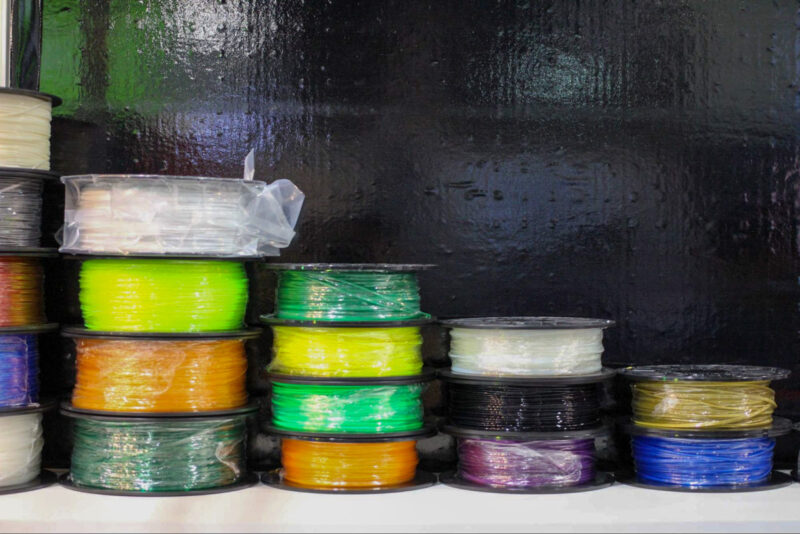
While PLA filament is more environmentally friendly than many of the petroleum-based alternatives, it varies from brand to brand. PLA is a bioplastic, so the organic matter it’s made with are renewable resources that are less invasive to collect than oil.
It also generates fewer toxins during production than traditional plastics and has been shown to print cleaner than ABS in studies of 3D printing VOCs.
PLA does have some drawbacks. Depending on where it sources its plant matter, it can contribute to water pollution from agricultural run-off and deforestation. 3D printing represents a minuscule share of global agriculture needs, so this presents a small concern in terms of filament specifically.
Choosing one of the best PLA filament brands with clearly defined and sourced materials can also mitigate the impact on the environment.
Which Filaments Are Most Eco-friendly?
There are relatively few PLA filaments that try for total eco-friendliness or sustainability. However, there are a few things you should consider when choosing a brand with environmental impact in mind.
Recycling
Buying recycled filaments is a great way to reduce plastic waste generated by 3D printing. These products tend to reuse their scrap from the manufacturing process or accept post-consumer filament waste of their virgin products.
Very few of these products will be 100% recycled since plastic degrades with each extrusion and must be supplemented with fresh material after a few lifecycles.
Packaging
Choosing brands that use cardboard spools and packaging can cut down significantly on single-use plastic waste. ProtoPasta was one of the first makers to switch from plastic to cardboard spools, though many brands have since followed suit.
Other brands like Filamentive have kept the plastic spools for their products, but they offer discounts and incentives on future orders when you return them to be reused.
Sourcing
Choosing quality filament brands that are transparent about the materials in their products is important for not only their environmental impact but also for safety, ease of use, and consistency of quality. Some brands take it a step further by making their PLA plastics from organic waste generated by other businesses that would otherwise end up in landfills.
Our Top Picks
3D PrintLife
3D Printlife is a brand dedicated to making 3D printing more sustainable environment-forward. Aside from their curated collection of the most sustainable printers and filaments on the market, they have their own line of eco-friendly filaments.
In addition to using all biodegradable cardboard packaging for their products, they upcycle all production scrap from their pro PLA filaments into their line of 100% recycled filament, RePLAy. They also produce their ALGA line of PLA completely from nuisance algae, thereby removing harmful organic materials from the environment and producing something useful from it.
FormFutura
FormFutura is a high-quality and affordable filament brand that offers a multitude of options for 3D printing materials. They have several types of PLA on offer, including specialty styles like high gloss, dual-toned, and glow-in-the-dark. They’ve also taken measures to make their products more sustainable and eco-friendly, like switching to cardboard spools and cutting down on plastic waste.
Their ReForm PLA line comes on a recycled cardboard spool and is one of the few filaments available that is made from 100% renewed material. By reusing the extrusion waste streams from their standard EasyFil PLA, they’ve eliminated a large part of their contribution to plastic waste from their manufacturing operations.
Additionally, their ReFill PLA line further reduces waste by sending filament as “refills” for the empty spools their customers already have.
PolyMaker
PolyMaker is a well-known filament brand known for its product lines of specialty PLA filaments. Their PolyTerra line in particular was started as a way to advocate for sustainability and a more eco-friendly approach to 3D printing.
The filaments themselves aren’t exactly ground-breaking on their own. They use cardboard spools and packaging, but the filament is made completely from virgin materials. However, to make up for their lack of green innovation in their products, they pledge to plant two trees for every spool of PolyTerra purchased to offset their carbon footprint.
Can You Compost PLA?
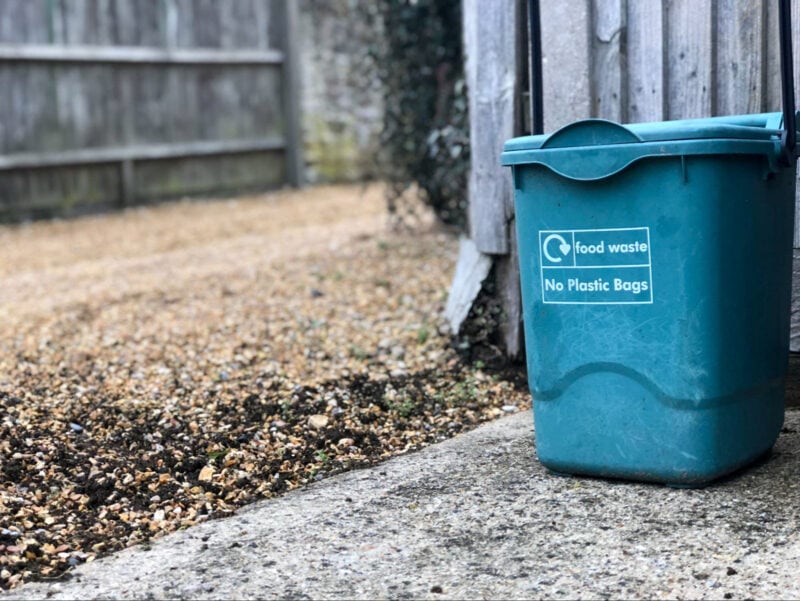
PLA can only be composted in an industrial facility. Home compost techniques can’t fully replicate the conditions PLA requires to biodegrade. Compost facilities hydrolyze PLA at temperatures of 50°C or more to begin the decomposition process. They also introduce specific organisms and strains of bacteria that feed on polylactic acid to speed up the process.
Even so, some curious composters still put PLA in their backyard tumbler to see what happens. This experimentation is risky because polylactic acid has been shown to produce microplastics when it partially degrades.
Home users also don’t have the same technology as commercial composts to confirm the total breakdown of PLA and could inadvertently introduce large amounts of microplastics to their soil.
Can You Recycle PLA?

In addition to being biodegradable, PLA is technically recyclable. Like other plastics, it needs to be sorted and properly labeled for the recycling facilities. However, plastic recycling as a whole is a complicated and inefficient process.
Only about 5% of recyclable plastic waste is actually recycled. This is due to a lack of resources to process certain plastics in local facilities, as well as added materials and dyes used by the manufacturer making it impossible to sort out and recycle different plastics.
This is especially true for 3D printing filaments since they are rarely 100% pure. Even if they have no unknown dyes, polymers, or other additives present from the manufacturer, other contaminants from the extrusion and printing processes may still be present.
Some users have chosen to reuse their filament waste by extruding it into new filament with limited success. It requires an investment in new equipment to extrude and wind the resulting filament and the results aren’t always consistent. However, if you produce a lot of printing waste, it could be worth the investment.
Otherwise, you can choose to buy from filament manufacturers who reuse consumer print scraps in their products. Some will even discount your next purchase when you send in your scraps.
Conclusion: Is PLA Biodegradable?
Yes, PLA filament is both biodegradable and compostable. But only in an industrial compost facility, so if you’re one of the many 3D printing enthusiasts who was excited to grow your tomatoes with soil rich in Benchies and Calibration Cats, we have some bad news for you.
But even with its limited potential as a biodegradable material, PLA is still one of the most eco-friendly plastics around. Made from renewable plant sources and with significantly less pollution than petroleum-based plastics, PLA’s biodegradation could be a viable answer to the current plastic waste crisis with the right infrastructure.



